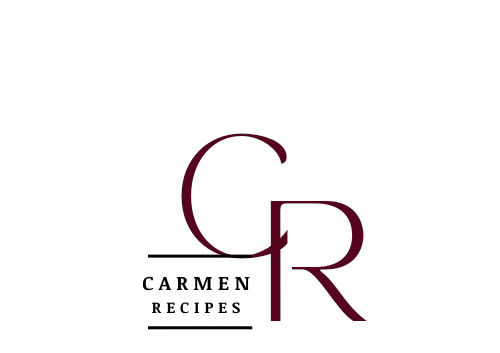
Meatloaf is a beloved comfort food known for its rich flavor, hearty texture, and flexibility in recipes. Yet, one of the most commonly asked questions when baking meatloaf is, “Do you cover meatloaf with foil when baking at 350°F?” This seemingly small decision can make a big difference in the moisture, texture, and appearance of the final dish. In this article, we’ll dive into the pros and cons of covering meatloaf, provide step-by-step preparation tips, and discuss key tools to use. Additionally, we’ll answer frequently asked questions and share expert tips to help you make the most delicious meatloaf every time.
Why Bake Meatloaf at 350°F?
Baking meatloaf at 350°F is one of the most popular techniques because this temperature offers a balance between thorough cooking and moisture retention. At 350°F, meatloaf cooks at a steady pace, allowing the ingredients to meld together without burning or drying out. This temperature also provides a safety net for juiciness, as the lower heat helps to prevent overcooking the exterior before the center reaches a safe temperature.
Generally, a 2-pound meatloaf will need to bake for 60-75 minutes at 350°F. However, this timing can vary based on the size of your meatloaf, its ingredients, and your oven’s quirks. For larger loaves, such as a 5-pound meatloaf, baking times may extend to about 90 minutes to ensure even cooking.
If you want a more in-depth look at various techniques for keeping your meatloaf moist and flavorful, consider reading how to make meatloaf like Martha Stewart, where you’ll find expert insights into balancing moisture, seasoning, and baking techniques.
Should You Cover Meatloaf with Foil?
Deciding whether to cover meatloaf with foil while baking is essential for achieving the desired texture and moisture level. Covering meatloaf has distinct advantages and disadvantages, so let’s break them down.
Pros of Covering Meatloaf with Foil
- Moisture Retention: Covering meatloaf with foil traps steam, which helps maintain the loaf’s internal moisture.
- Even Cooking: With a foil cover, heat circulates more evenly, allowing the center to cook without over-baking the exterior.
- Enhanced Flavor: Moisture retention preserves the natural flavors of the ingredients, creating a more balanced taste.
Cons of Covering Meatloaf with Foil
- Limits Crust Formation: Covering meatloaf prevents the top layer from crisping up, which some may prefer for added texture.
- Steam Effect: A fully covered meatloaf can take on a steamed texture rather than a roasted one, which might be less appealing for those seeking a firmer top.
Many home cooks find that a combination of covering and uncovering works best: start with a covered meatloaf to lock in moisture, and then remove the foil for the last 15-20 minutes to allow for a crispy top. Should I drain the grease from my meatloaf? offers additional guidance for managing moisture while baking.
Step-by-Step Guide: Preparing Meatloaf for Baking
Creating a flavorful, juicy meatloaf starts with the right preparation. Here’s a step-by-step guide that will lead you through each stage of making the perfect meatloaf.
- Choose the Right Ingredients
Classic meatloaf includes ground beef, breadcrumbs, eggs, and seasoning. To prevent dryness, add moisture-rich ingredients like ketchup, milk, or finely chopped vegetables. Ingredients with high water content, like onions or bell peppers, enhance moisture retention during baking. - Blend Ingredients Carefully
Over-mixing the ingredients can lead to a dense, tough meatloaf. Mix the ingredients gently, folding in the eggs, breadcrumbs, and seasonings until just combined. This ensures a tender texture. - Shape and Place in the Pan
Shaping the meatloaf properly is crucial. Avoid pressing the mixture too firmly, as this can lead to a denser texture. Lightly shape it in a loaf form and place it in a baking dish or pan. Using a loaf pan will result in a taller loaf with more moisture in the center, while a baking sheet will allow for a more even crust. - Cover with Foil and Bake at 350°F
Bake your meatloaf covered for the first 30-45 minutes to retain moisture, then remove the foil for the remaining time to achieve a browned crust. Be sure to use a meat thermometer to check for doneness—the internal temperature should reach 160°F.
Enhancing Uncovered Meatloaf: Techniques for Moisture Retention
If you prefer to bake your meatloaf uncovered, there are several ways to keep it moist:
- Add a Glaze
Brushing a glaze over the top of the meatloaf before baking helps seal in moisture and adds flavor. You can use ketchup, BBQ sauce, or a custom glaze. For more ideas on flavorful toppings, explore ultimate meatloaf sauce recipes. - Incorporate Moist Ingredients
Moisture-rich vegetables like grated carrots, zucchini, or even tomatoes can be added to the meatloaf mix. These ingredients release water as they cook, keeping the meatloaf juicy. - Let It Rest After Baking
Once the meatloaf is done, let it rest for at least 5-10 minutes before slicing. Resting allows the juices to redistribute, ensuring each slice is flavorful and moist.
Tools for Baking Meatloaf Perfectly
Certain tools can help you achieve a consistent, well-cooked meatloaf:
- Meat Thermometer
A meat thermometer is essential for checking the internal temperature of your meatloaf, ensuring it reaches a safe 160°F without overcooking. - Loaf Pan or Baking Sheet
A loaf pan is excellent for a denser loaf, while a baking sheet allows for more browning and a firmer crust. Choose based on your texture preferences. - Foil
Aluminum foil is useful for covering the meatloaf initially, preventing moisture loss and helping to maintain an even bake.
Baking Meatloaf at High Altitudes
If you live at a high altitude, consider making adjustments to your meatloaf baking routine:
- Increase Baking Time
At higher altitudes, baking can take a bit longer. Add 5-10 minutes to the total baking time, checking frequently to avoid overcooking. - Adjust Moisture Levels
Meatloaf may dry out more quickly at high altitudes, so adding a bit more liquid, such as milk or broth, can help counteract this.
Frequently Asked Questions About Baking Meatloaf
1. Should You Cover Meatloaf With Foil When Baking at 350°F?
Covering meatloaf helps retain moisture and prevents the top from drying out, especially in the first part of baking. Removing the foil near the end will allow the top to brown.
2. Can You Bake Meatloaf at a Higher Temperature?
Yes, but higher temperatures risk drying out the meatloaf. Baking at 350°F allows for a thorough, even bake with a juicy interior. Baking at 375°F is also possible for a faster bake but watch closely to avoid dryness.
3. How Long Should Meatloaf Rest After Baking?
Allowing meatloaf to rest for 5-10 minutes is ideal. This resting time allows juices to redistribute throughout the loaf, making for more flavorful slices.
4. Can You Bake Meatloaf Uncovered?
Yes, though uncovered meatloaf can become dry. Using a glaze or moist ingredients in the mix can help retain moisture if you prefer baking uncovered.
5. What’s the Best Way to Prevent Meatloaf from Falling Apart?
Use a binder like breadcrumbs or oatmeal along with eggs. These ingredients help hold the loaf together, allowing for clean, uniform slices.
6. How to Check Meatloaf Doneness Without a Thermometer?
If you don’t have a meat thermometer, you can visually check doneness by cutting into the center of the loaf. It should be brown throughout without any pink.
Expert Tips for Baking Meatloaf
- Experiment with Seasonings: Don’t be afraid to add herbs, spices, or even a bit of hot sauce to give your meatloaf more flavor.
- Use a Mix of Meats: Combining ground beef with pork or veal can improve texture and flavor.
- Make Extra for Leftovers: Meatloaf is great reheated and makes excellent sandwiches the next day.
- Drain Grease Midway: In a loaf pan, carefully tilt the pan to drain excess grease halfway through baking for a healthier result.
Conclusion: Mastering Meatloaf at 350°F
For the best meatloaf, bake it at 350°F with foil covering the initial stages, then remove the foil toward the end to create a caramelized crust. By understanding the advantages of covering, knowing when to uncover, and following tips for ingredient preparation, you can create a perfectly moist and flavorful meatloaf that will become a favorite in your home. Whether you choose to cover or leave it uncovered, using these tips will ensure a juicy, satisfying meatloaf that everyone can enjoy.








